Las Vegas is renowned for its dazzling lights and vibrant energy, but just a short drive away lies a vast, rugged wilderness offering incredible opportunities for exploration. If you’re seeking to trade the casino floor for canyon trails and neon signs for starry skies, you’re in the right place. As a seasoned traveler with a deep appreciation for the outdoors and its connection to culture and history, I’m here to guide you to some of the best backpacking near las vegas. These aren’t just day trips; these are immersive overnight journeys into stunning desert landscapes, rich with geological wonders and challenging terrain.
Backpacking near Las Vegas offers a unique blend of accessibility and adventure. You can easily fly into a major international airport and quickly transition to remote trails. The desert environment, while demanding, presents spectacular scenery – towering red rocks, deep canyons, vast valleys, and incredible night skies. This guide delves into the top multi-day hiking destinations within a reasonable drive of the city, providing insights to help you plan your next great escape into the wild.
Why Choose Backpacking Near Las Vegas?
Beyond the obvious escape from the city bustle, backpacking near Las Vegas puts you within reach of some of the most iconic wilderness areas in the American Southwest. Within a few hours, you can access national parks and state parks that boast world-class trails suitable for overnight trips. Unlike day hikes, backpacking allows you to truly disconnect, experience the solitude of the desert night, witness breathtaking sunrises and sunsets from remote locations, and push your limits. It’s an opportunity to connect with the raw, untamed beauty of the landscape on a deeper level, understanding its history, geology, and unique challenges.
Best Time of Year for Backpacking Near Las Vegas
Timing is crucial for desert backpacking. The searing heat of summer (June-August) makes multi-day trips at lower elevations extremely dangerous, often requiring hiking only in the early morning or late evening. Winter (December-February) can bring freezing temperatures, and snow, especially at higher elevations (like in the Grand Canyon or Zion).
The absolute best time for backpacking near las vegas is during the shoulder seasons: Spring (March-May) and Fall (September-November). Temperatures are generally mild and pleasant, though can still fluctuate dramatically between day and night. Spring offers wildflowers, while fall provides crisp air and beautiful light. Always check weather forecasts specific to your destination before setting out.
Essential Gear and Safety Tips for Desert Backpacking
Desert environments present unique challenges compared to other climates. Proper preparation and gear are paramount for a safe and successful backpacking trip near Las Vegas.
- Water is Non-Negotiable: Carry more water than you think you’ll need (at least 1 gallon per person per day, often more in hot conditions). Know where reliable water sources (if any) are located on your route and carry a reliable water filter or purification tablets. Consider caching water if possible and permitted.
- Sun Protection: The desert sun is intense. Wear lightweight, long-sleeved shirts and pants, a wide-brimmed hat, and sunglasses. Use high SPF sunscreen and reapply frequently.
- Navigation: Trails can be faint or non-existent in some desert areas. Always carry a map and compass, know how to use them, and consider carrying a GPS device or using a reliable navigation app with downloaded offline maps. Inform someone of your itinerary.
- Footwear: Sturdy, broken-in hiking boots are essential for rocky, uneven terrain. Gaiters can help keep sand and pebbles out of your boots.
- Layering: Temperatures can swing dramatically. Pack layers, including a warm jacket or fleece for cool mornings and evenings.
- Leave No Trace: Practice Leave No Trace principles diligently. Pack out everything, including waste (yes, that means packing out human waste in designated bags in many areas, like Havasupai and parts of the Grand Canyon). Stay on established trails to protect fragile cryptobiotic soil. Minimize campfire impact or use a stove.
Top Destinations for the Best Backpacking Near Las Vegas
Here are some of the premier locations for challenging and rewarding multi-day backpacking adventures within a reasonable drive of Las Vegas, focusing on routes that offer overnight experiences.
1. Havasupai (Arizona) – ~4 hours from Las Vegas
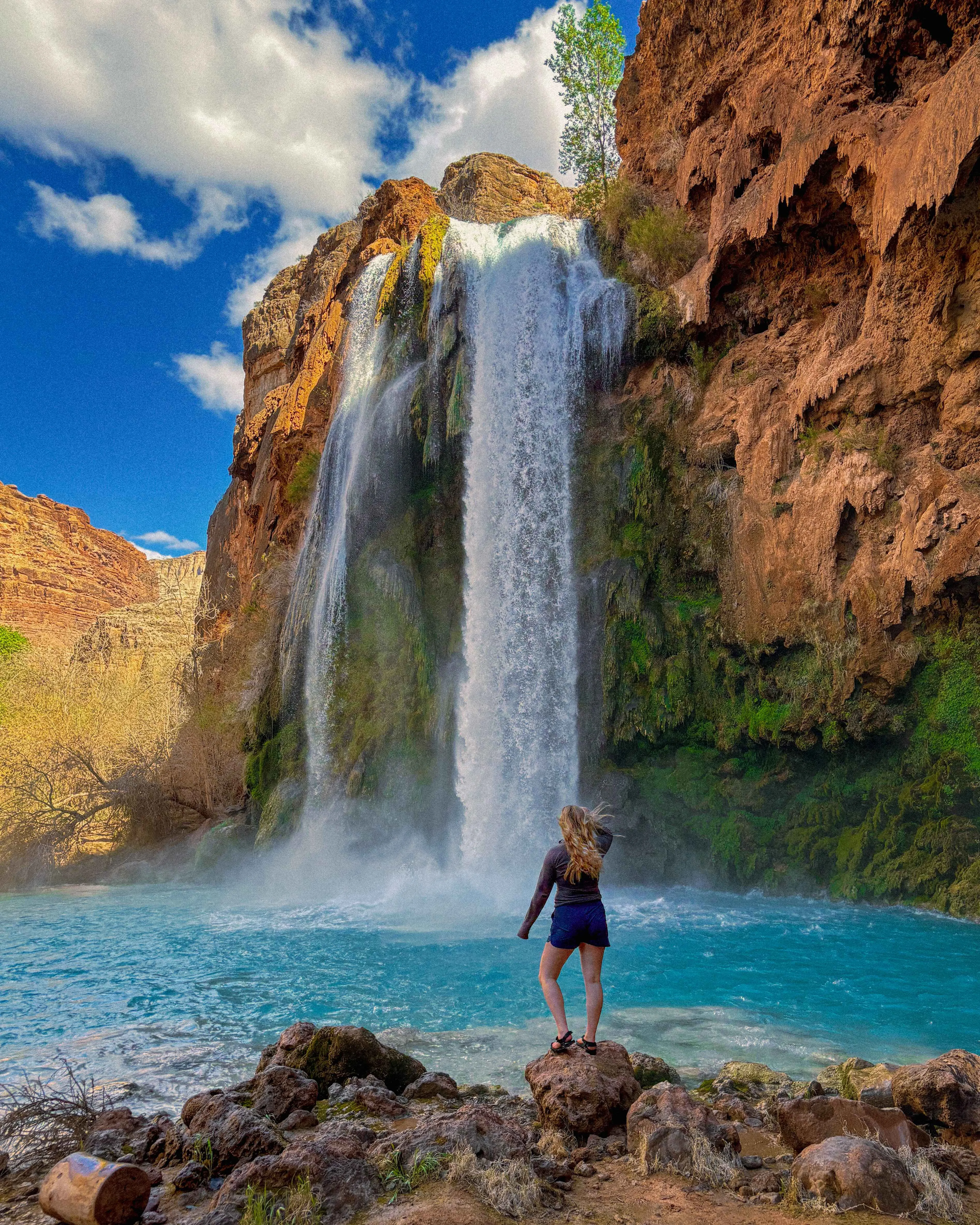
Considered one of the most sought-after backpacking destinations in the US, Havasupai is a truly unique experience. Located on Havasupai tribal lands deep within a side canyon of the Grand Canyon, the main attraction is the series of stunning blue-green waterfalls, including Havasu Falls, Mooney Falls, and Beaver Falls.
- Backpacking Focus: The standard trip is an 11-mile hike down from the trailhead (Hualapai Hilltop) to the Supai Village and then another 2 miles to the campground situated along the creek between Havasu Falls and Mooney Falls. Most trips are 3 nights/4 days, allowing time to explore the various falls.
- Key Challenge: Securing permits is incredibly difficult, requiring planning months in advance via the official Havasupai Tribe website. The hike out (11 miles uphill) is strenuous, especially with a full pack.
- Logistics: Permits are mandatory and non-refundable. Water is available in the village and at the campground, but purify it. Pack out all trash. This is a demanding hike in a remote location; be prepared. This is undeniably one of the best backpacking near las vegas for sheer spectacle, if you can get a permit.
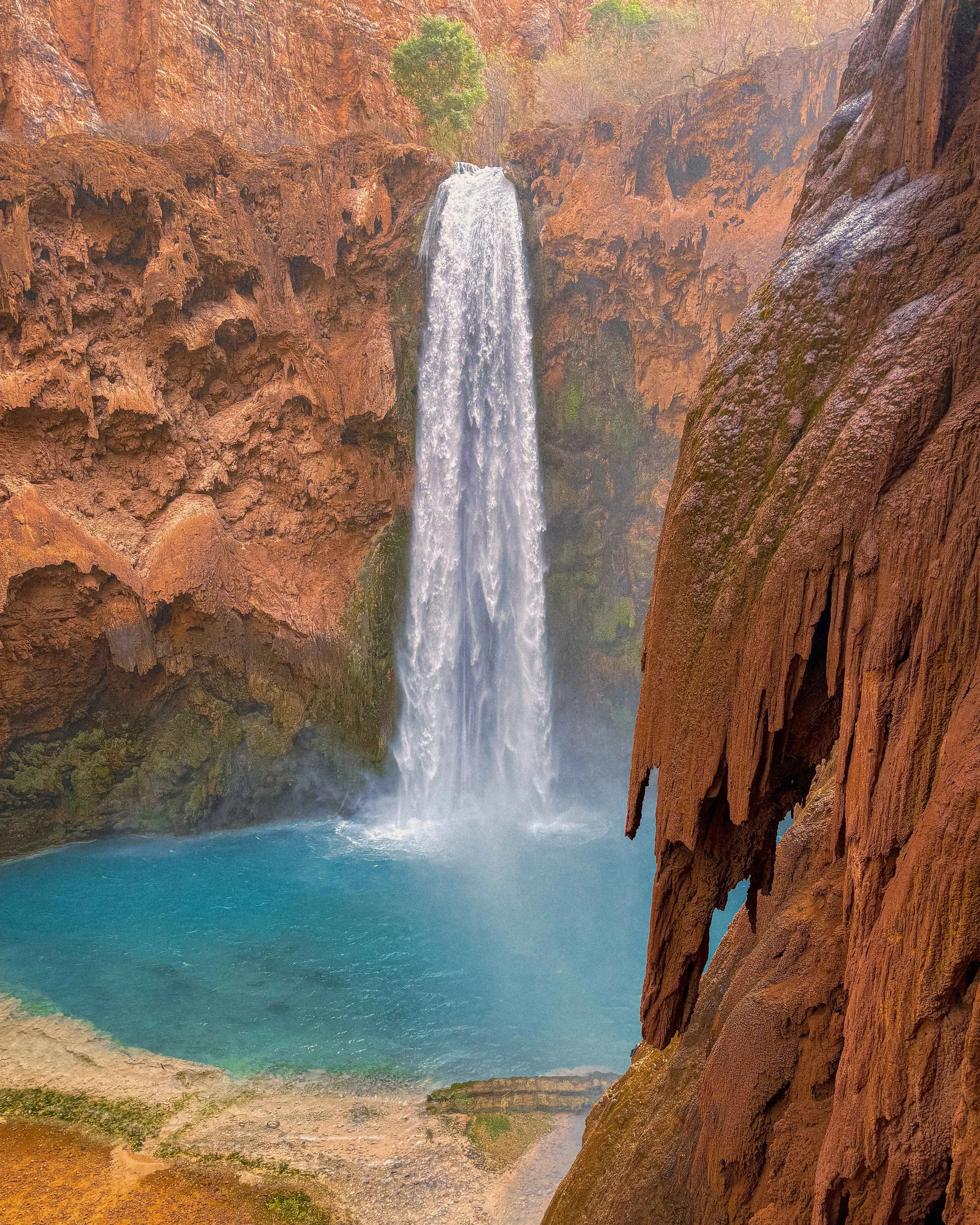
2. Grand Canyon National Park (South Rim, Arizona) – ~4.5 hours from Las Vegas
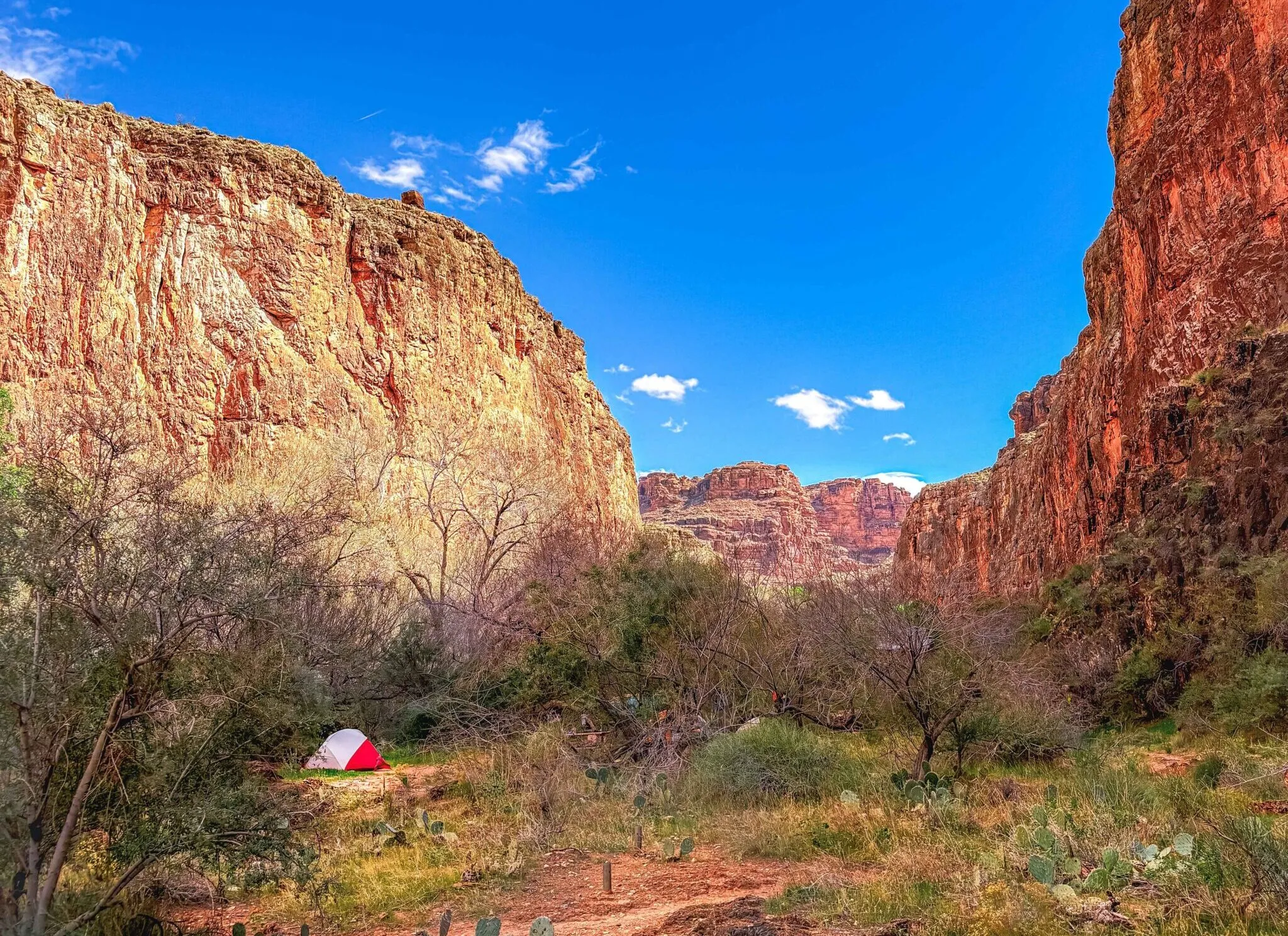
While the Grand Canyon is massive, the South Rim offers excellent access to inner canyon backpacking routes. Descending into the canyon is a completely different experience than viewing it from the rim.
- Backpacking Focus: Popular overnight routes include hiking down the Bright Angel Trail or South Kaibab Trail to Indian Garden Campground (about halfway down) or all the way to the bottom to stay at Phantom Ranch (requires lottery) or the Bright Angel Campground near the Colorado River. Longer trips can involve traversing from the South Rim to the North Rim (Rim-to-Rim) or even Rim-to-Rim-to-Rim, but these are extremely challenging and require advanced planning, permits, and fitness.
- Key Challenge: The immense elevation change (thousands of feet). Hiking down is hard on joints, and hiking up is a significant cardiovascular test, often done with heavy packs in challenging temperatures. Inner canyon temperatures are much hotter than the rim.
- Logistics: Backcountry permits are required for all overnight stays below the rim and are difficult to obtain (apply months in advance via lottery or check for last-minute availability). Water availability varies by trail and season; research water sources carefully. Be prepared for extreme temperature fluctuations. This is a bucket-list destination offering some of the most challenging and rewarding best backpacking near las vegas.
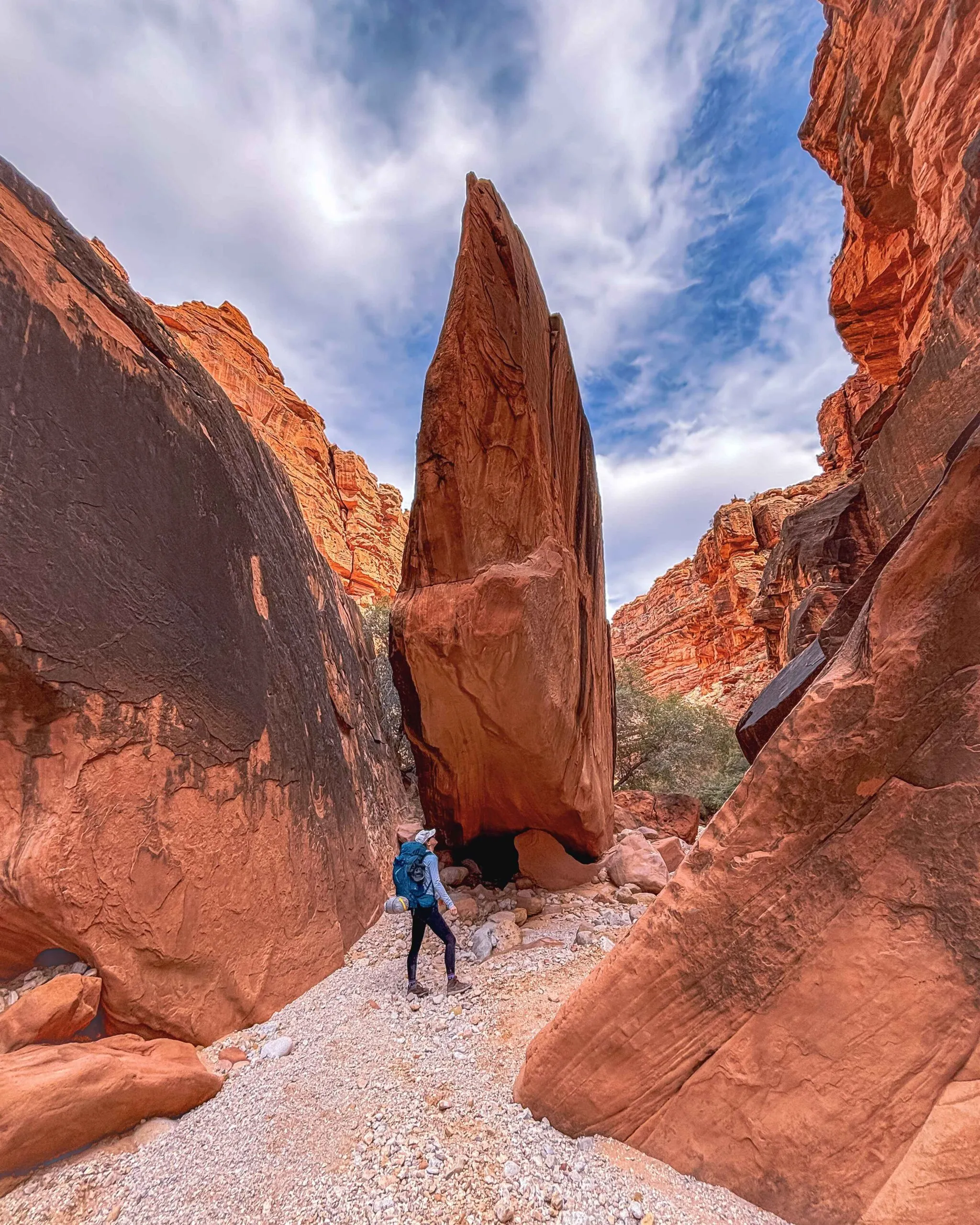
3. Zion National Park (Utah) – ~2.5 hours from Las Vegas
Zion’s towering sandstone cliffs and narrow slot canyons offer unique backpacking opportunities. While many visit for day hikes, the park has extensive backcountry options.
- Backpacking Focus: The most famous backpacking route is hiking The Narrows from the top down (requires permit, potentially wet/cold depending on season, involves wading through the Virgin River). Other significant backcountry trails include sections of the West Rim Trail or the La Verkin Creek Trail in the Kolob Canyons area, leading to stunning viewpoints and remote campsites.
- Key Challenge: Permits for The Narrows are highly competitive and often require a lottery. Other backcountry permits also have quotas. Navigating slot canyons can be technical and requires careful monitoring of weather for flash flood risks. Elevation gain can be significant on rim trails.
- Logistics: Backcountry permits are required for all overnight trips and are in high demand. Shuttle systems are mandatory during peak season for accessing many trailheads in the main canyon. Water sources are limited and often require filtration/treatment. Be prepared for a mix of exposed trails and shaded canyon sections. Zion offers incredible, though often permit-constrained, options for the best backpacking near las vegas.
4. Death Valley National Park (California/Nevada) – ~2.5 hours from Las Vegas
Death Valley, despite its name, offers surprisingly diverse landscapes and challenging backpacking experiences for those prepared for its extremes.
- Backpacking Focus: Opportunities range from high-elevation routes like Telescope Peak (requires winter gear in colder months, significant climb) to remote canyon exploration (e.g., Cottonwood Canyon, Marble Canyon, though routes can be rugged and require strong navigation skills). Traversing the valley floor offers unique challenges (heat, vast distances) but less typical backpacking routes.
- Key Challenge: EXTREME temperatures (hottest place on Earth in summer). Lack of reliable water sources is the biggest hurdle; water caching is often essential for multi-day trips. Remote nature means self-sufficiency and strong navigation are critical.
- Logistics: Backcountry permits are generally not required for hiking/backpacking in Death Valley, but registration is recommended at visitor centers or trailheads. You must carry all your water or cache it beforehand. Be acutely aware of weather conditions and have bailout plans. Despite its challenges, Death Valley provides truly remote and starkly beautiful options for the adventurous seeking the best backpacking near las vegas in a unique environment.
5. Joshua Tree National Park (California) – ~3.5 hours from Las Vegas
Famous for its iconic Joshua Trees and unique rock formations, this park offers readily accessible backcountry camping and trail networks suitable for backpacking.
- Backpacking Focus: The California Riding and Hiking Trail traverses the park (about 35 miles one way), offering a popular point-to-point or section-hike option. Numerous backcountry boards provide access to designated wilderness camping zones, which require hiking at least a mile from the road.
- Key Challenge: Water scarcity. There are very few reliable water sources in Joshua Tree; backpackers must carry all their water or arrange extensive water caches beforehand. Navigation can be tricky off-trail among the rock formations.
- Logistics: Backcountry permits (free) are required and can be obtained at specific registration boards. Choose your backcountry zone and trailhead. Be prepared for exposed hiking with little shade. The beauty of Joshua Tree’s landscapes and incredible stargazing make it a strong contender for those exploring the best backpacking near las vegas.
6. Red Rock Canyon National Conservation Area (Nevada) – ~0.5 hours from Las Vegas
While widely known for its scenic drive and day hikes, Red Rock Canyon also offers limited, more primitive backpacking opportunities compared to the National Parks.
- Backpacking Focus: There are designated backcountry campsites accessible via trails like the Pine Creek Canyon Trail or trails leading into the La Madre Mountain Wilderness. These are typically basic sites without amenities and require significant hiking to reach.
- Key Challenge: Limited designated sites require advance planning and permits. Water sources are scarce and unreliable; backpackers must carry all their water in.
- Logistics: Backcountry permits are required and can be obtained through the Red Rock Canyon Visitor Center or online. Be prepared for rocky, sometimes strenuous trails. While not as extensive as the National Parks, Red Rock offers convenient, close-to-Vegas options for the best backpacking near las vegas for shorter, less demanding trips.

Planning Your Las Vegas Backpacking Adventure
Choosing the best backpacking near las vegas depends on your experience level, fitness, available time, and desired challenge. Always research specific trail conditions, permit requirements, water availability, and weather forecasts immediately before your trip. Invest in quality gear, practice Leave No Trace, and err on the side of caution in the challenging desert environment.
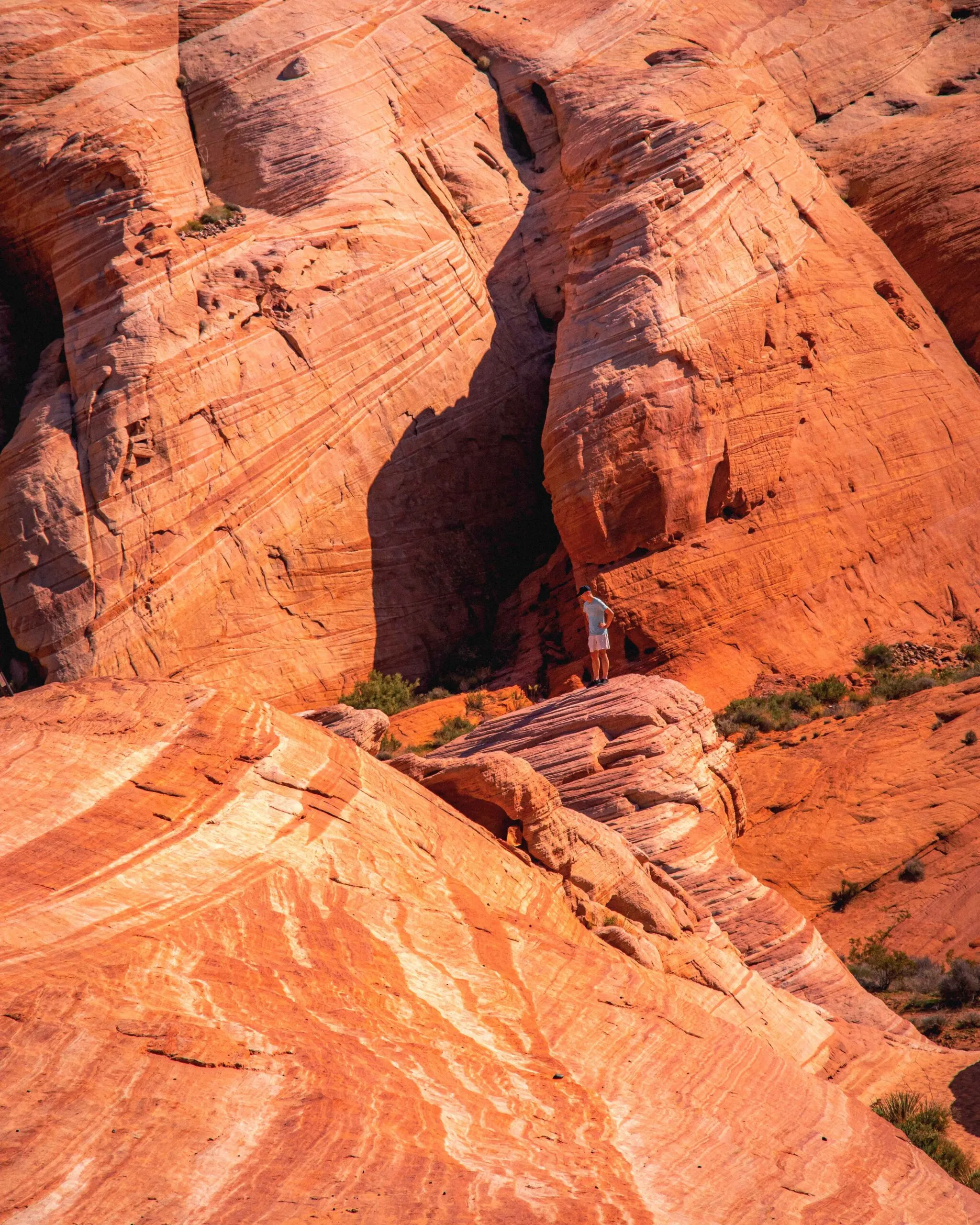
While Valley of Fire State Park is a stunning area for day hiking and camping, it is less known for traditional multi-day backpacking routes compared to the larger National Parks listed above. Its beauty makes it worth a visit, but focus on the National Parks for true wilderness backpacking experiences.
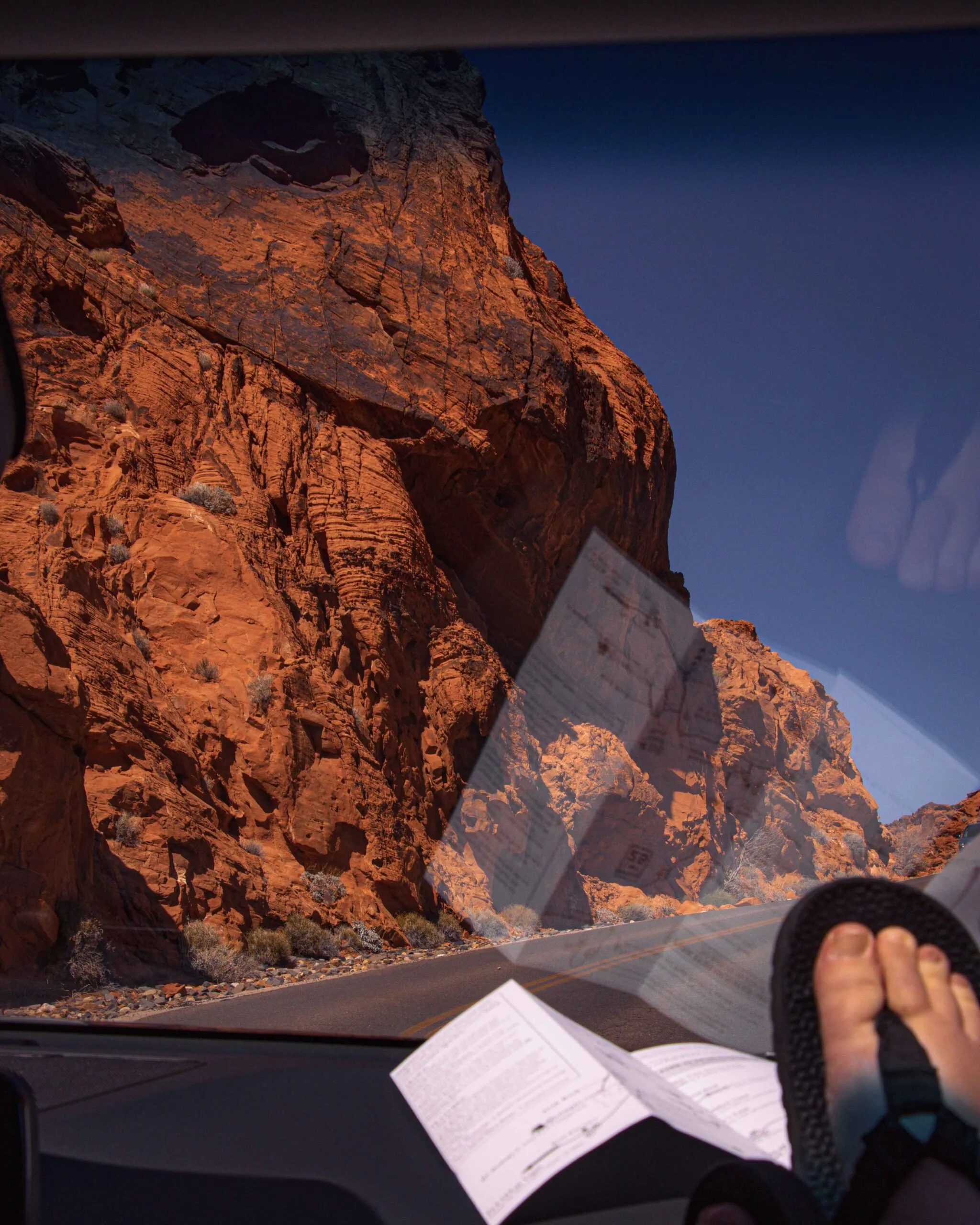
Escaping the glow of the Las Vegas Strip for the vastness of the surrounding wilderness is an unforgettable experience. Whether you’re tackling the permits for Havasupai, descending into the depths of the Grand Canyon, exploring Zion’s canyons, facing the extremes of Death Valley, or navigating Joshua Tree’s unique landscape, you’re sure to find incredible best backpacking near las vegas. Pack your bags, plan meticulously, and prepare for an adventure that connects you deeply with the raw beauty and resilient spirit of the desert.
Frequently Asked Questions About Backpacking Near Las Vegas
- Do I need permits for backpacking near Las Vegas? Yes, for many of the most popular and remote areas like Havasupai, Grand Canyon National Park (below the rim), and Zion National Park backcountry, permits are mandatory and often difficult to obtain. Always check the official park or tribal website for current requirements and application procedures well in advance.
- What is the best time of year to backpack near Las Vegas? Spring (March-May) and Fall (September-November) offer the most favorable temperatures for desert backpacking. Summer is dangerously hot, and winter can bring freezing temperatures, especially at higher elevations.
- Is water a major concern? Absolutely. Water scarcity is one of the biggest challenges in desert backpacking. Reliable water sources are few and far between. You must carry sufficient water or plan for water caches and reliable filtration/purification methods.
- How difficult is backpacking in these areas? Difficulty varies greatly depending on the specific trail and destination. Many routes involve significant elevation change, uneven terrain, and exposure to the elements. Destinations like Havasupai and Grand Canyon inner canyon trips are considered strenuous and require good physical fitness.
- What essential gear should I pack for desert backpacking? Beyond standard backpacking gear (tent, sleeping bag, pack, stove), essential desert gear includes sufficient water capacity (or caching plan), robust sun protection (clothing, hats, sunscreen), reliable navigation tools (map, compass, GPS), and knowledge of Leave No Trace principles specific to arid environments (especially regarding human waste and cryptobiotic soil).
